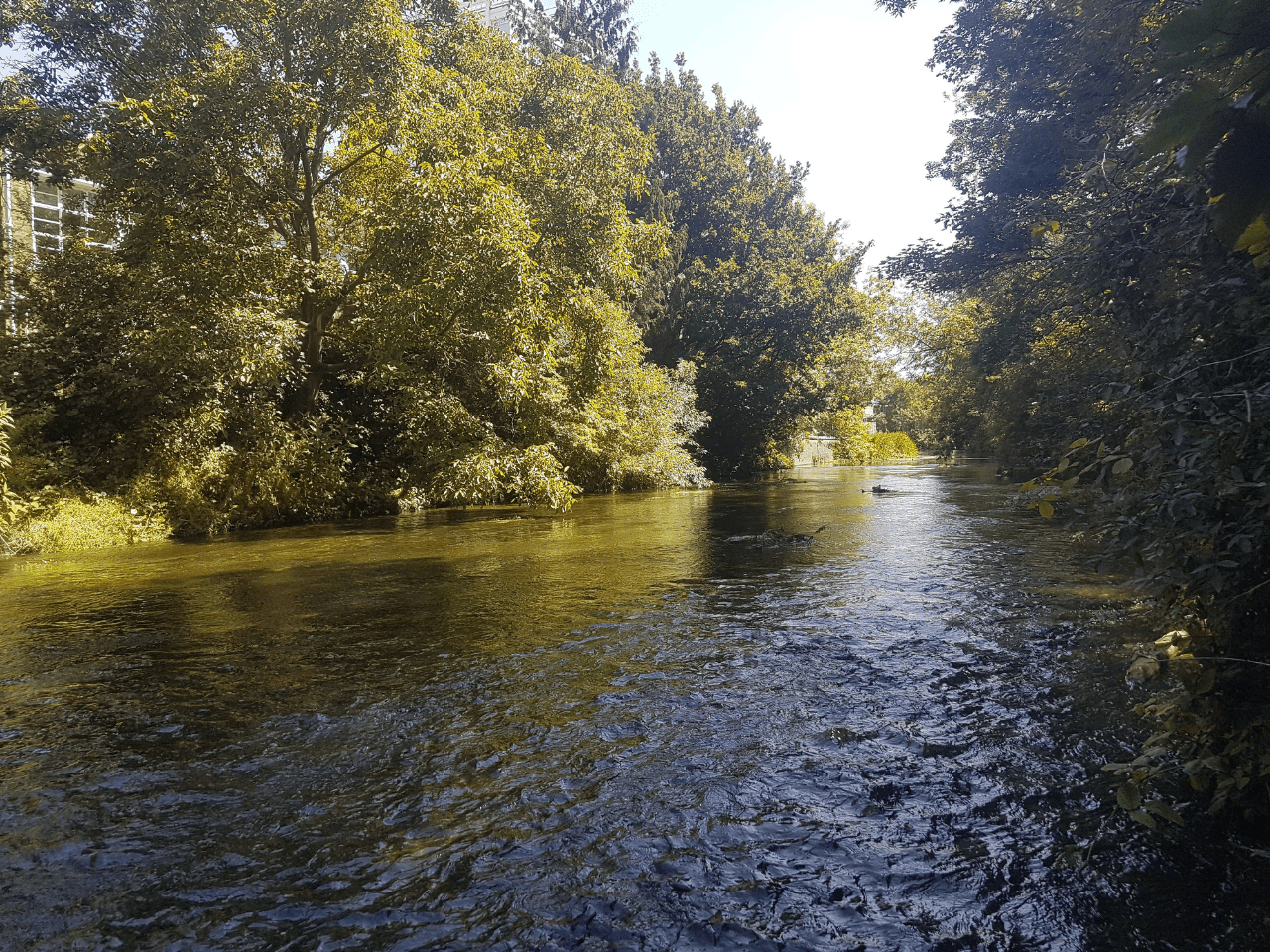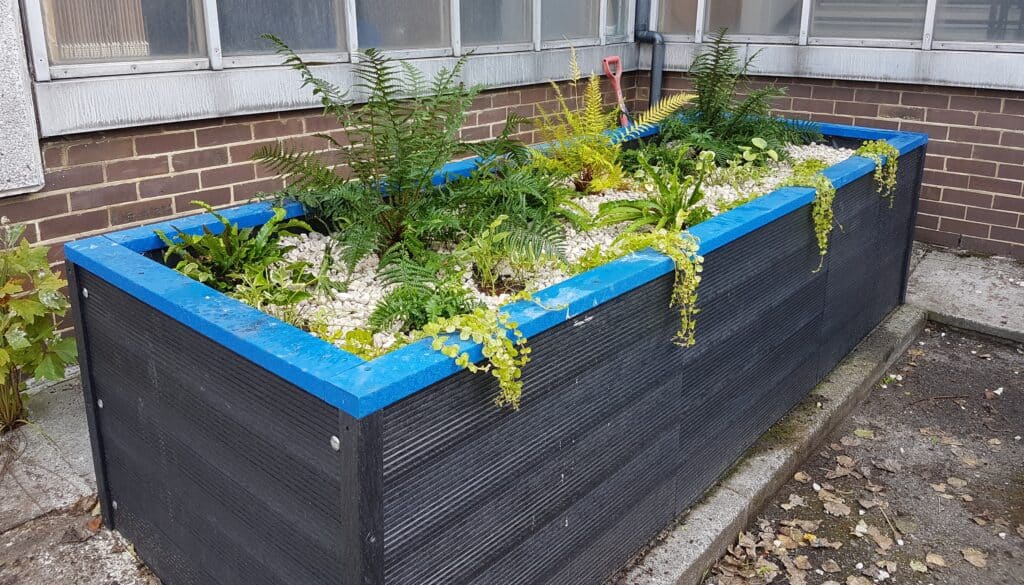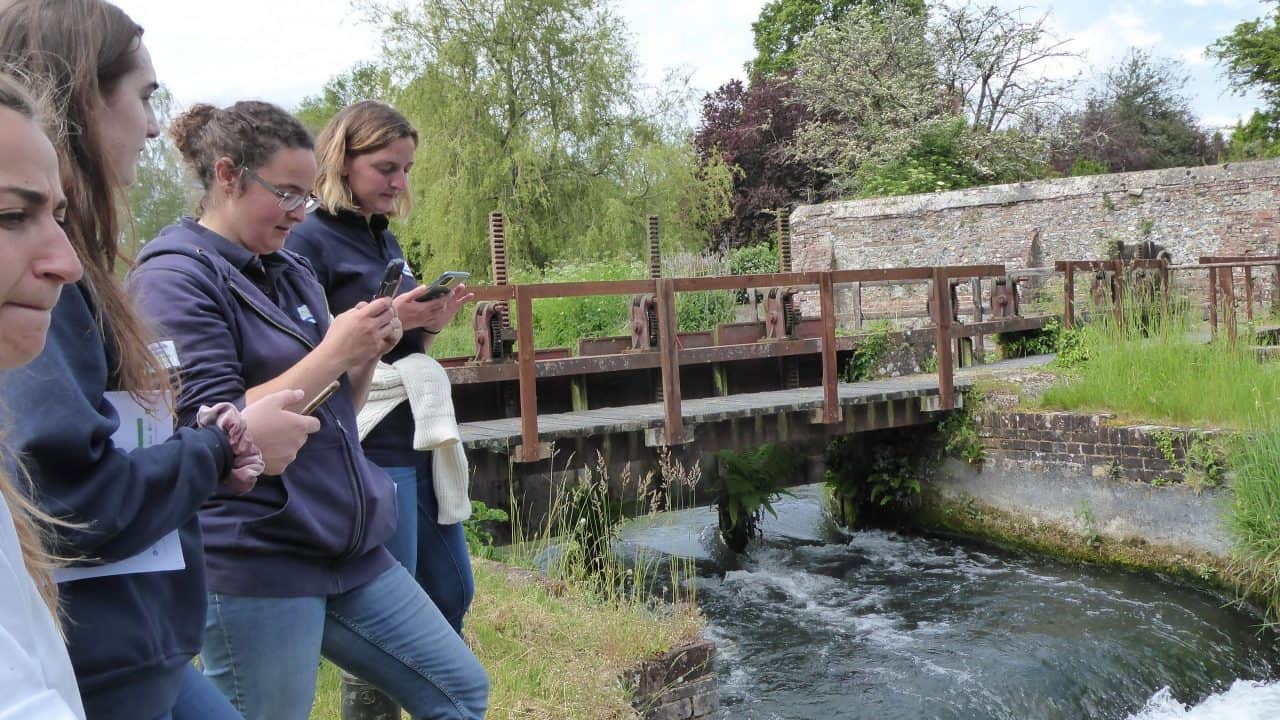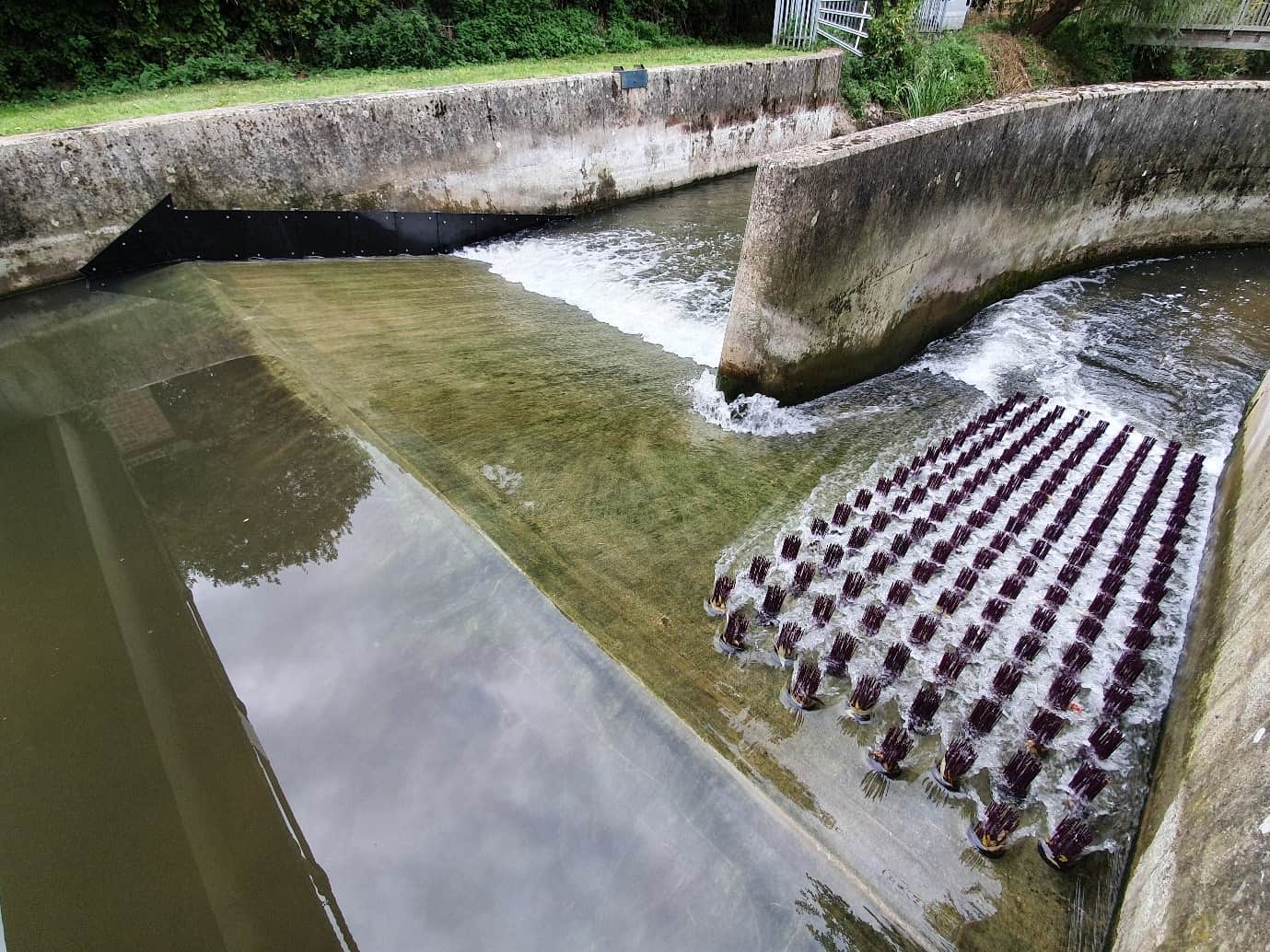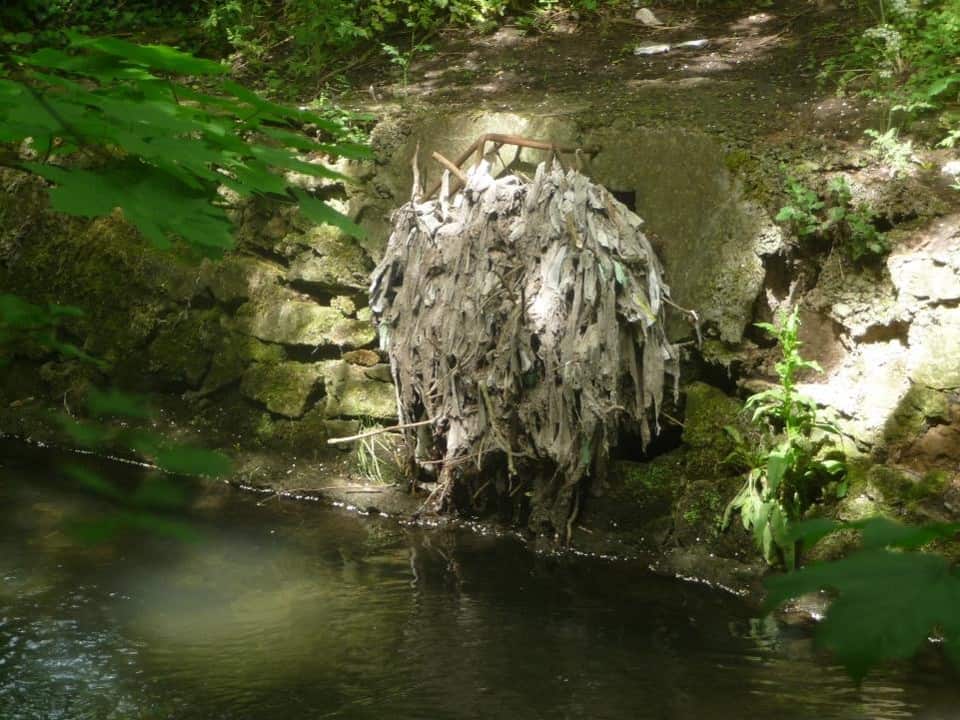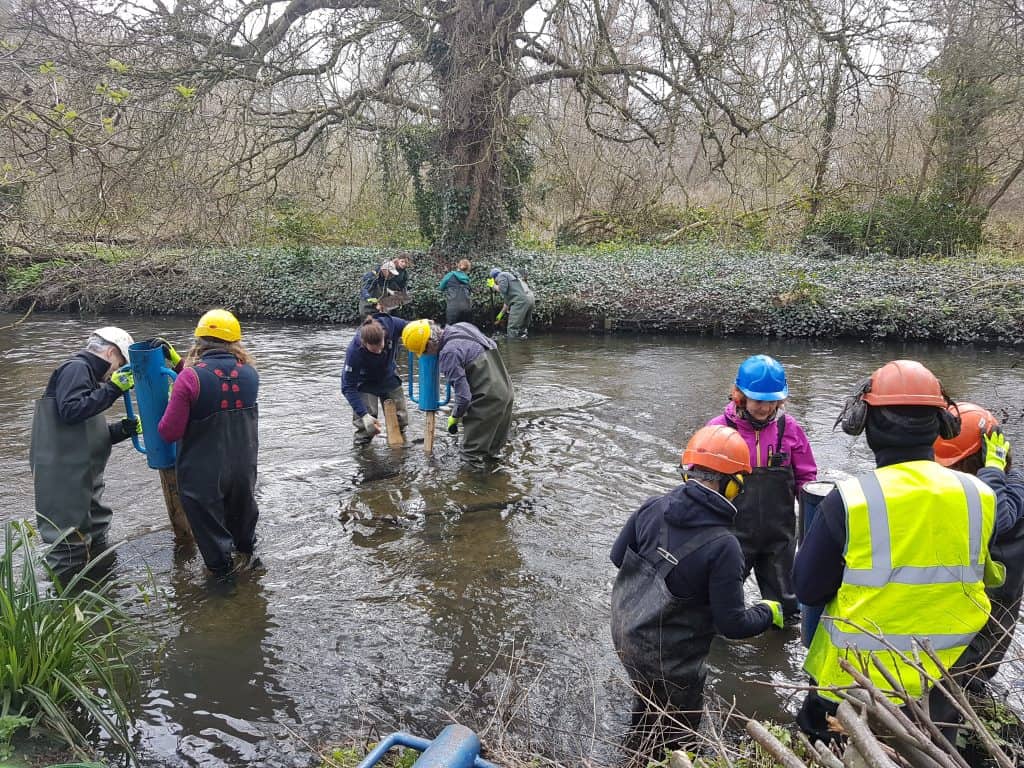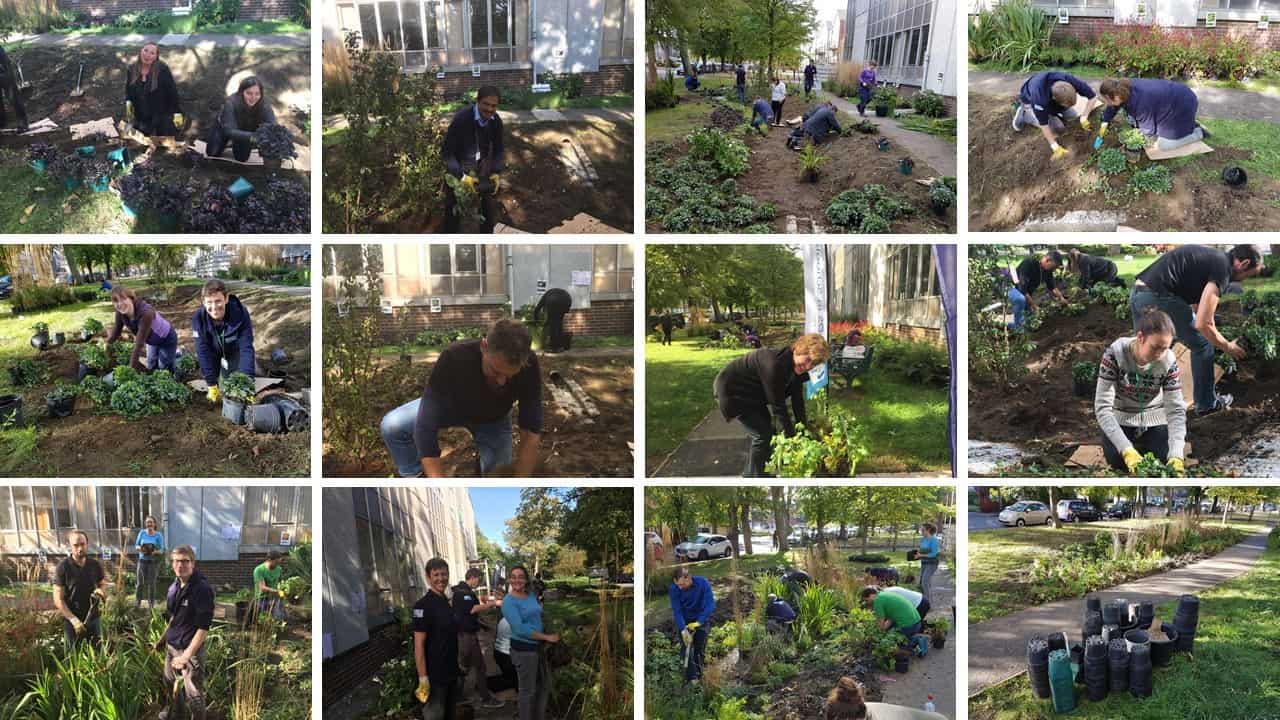The weather could not have been better for our planting day at Sutton Council’s Denmark Road Offices, writes Charlene Duncan. This planting day was organised to enable staff members to contribute to the new rain garden. Thanks to the hard work of everyone who came out, the rain garden is now complete!
Nearly 30 members of staff volunteered their time to transform the area in front of the building. It was a great chance for staff to meet people from other departments and to socialise with colleagues. Staff members gave what time they could, from 20 minutes to more than three hours! Every contribution was greatly appreciated.
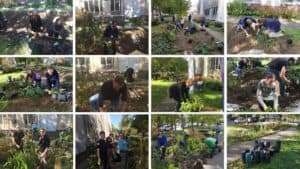
This rain garden is part of our SuDS in Sutton’s Schools project. It demonstrates sustainable drainage systems (SuDS) to the schools involved in the project and the wider community. SuDS are measures that divert water from the drains to reduce flood risk and improve the quality of water flowing into our rivers.
By waiting until the autumn to plant up the rain garden, we have increased the new plants’ chances of survival. Planting during this summer’s drought would have meant the plants required a lot of watering. While a bit of watering is still necessary for the newly planted garden, once established, the water from the offices’ downpipes will be all that is needed.
So, a massive thank you to all volunteers who gave up their time. And, an extra thank you for those of you who could not give your time but offered moral support and encouragement on the day. The garden is looking lovely and it’s all down to you.
Now all we need is some rain.

Watch our timelapse video of the rain garden being constructed

